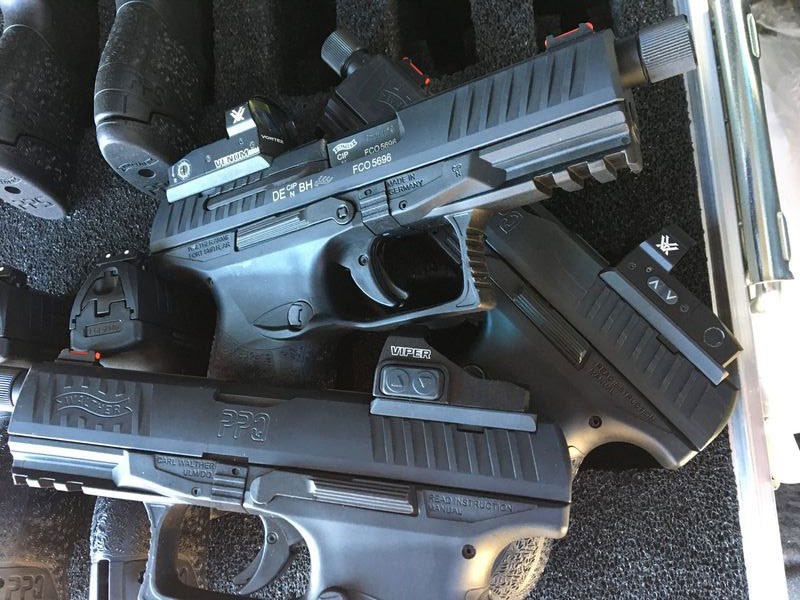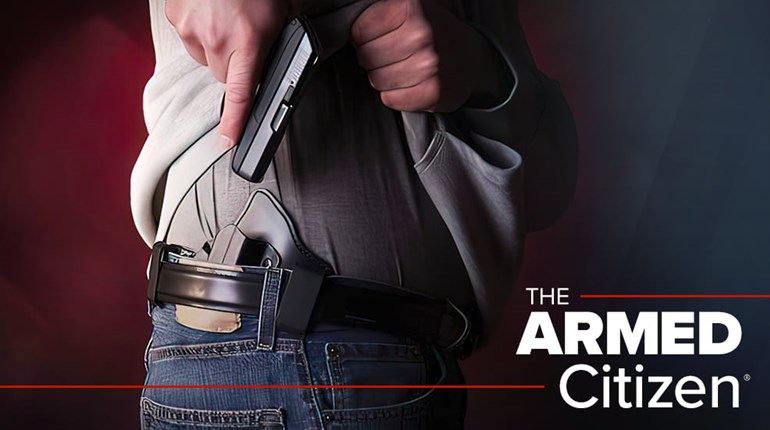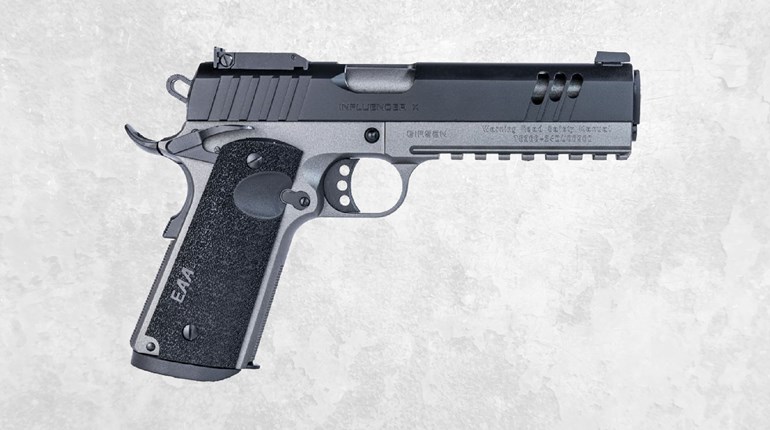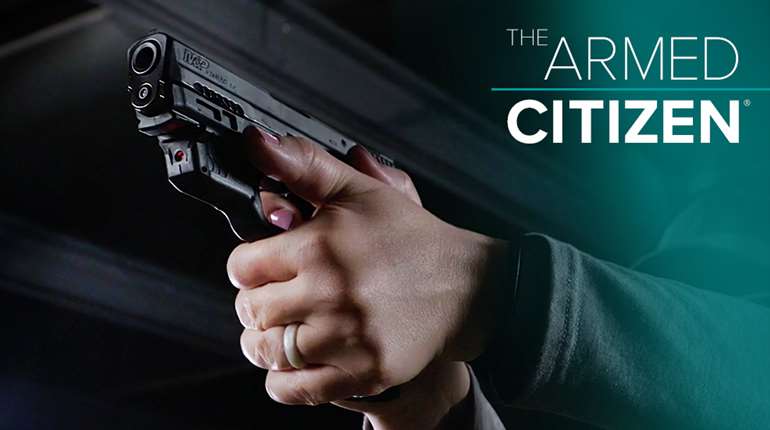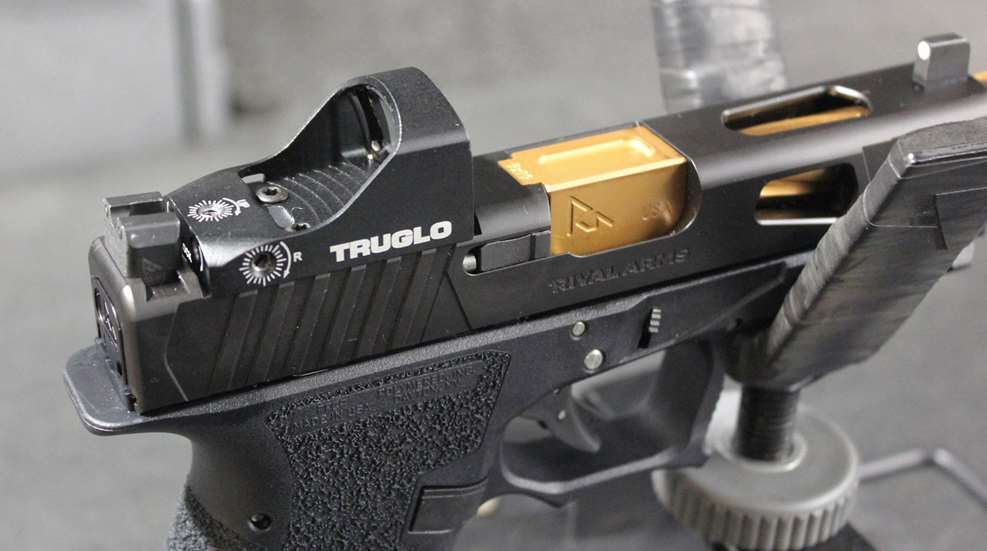
I can remember several years ago when the majority of defensive semi-automatic pistols “suddenly” had accessory rails on their dust covers. Attaching trigger finger operated lights or laser sights to those rails was in vogue with civilians and law enforcement alike because those lights and lasers were compact, lightweight and relatively affordable to use. Today we're seeing the next evolution in defensive handgun sighting technology gaining in popularity. More defensive pistols than ever “suddenly” have micro red dot optics ready slides as a standard feature. Here’s a chance to learn more about these optics and how they could fit into your self defense plan.
What is a Micro Red Dot Optic (MRDO)?
Generally speaking, micro red dot optics are compact reflector, or “reflex,” type sight systems designed specifically for semi-automatic pistols. A clear, curved, non-magnified lens acts as the reflector for a focused beam of light projected by a light-emitting diode (LED). When the person holding the pistol looks through the sight, a bright dot of colored light appears to hover in the center of the lens. That red dot acts as an aiming point. Like other types of scopes, red dots have height and windage screws that allow the position of the dot to be sighted in for a given distance.
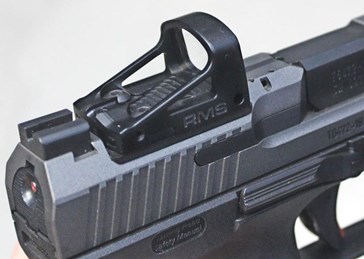
The MRDOs have gained in popularity in defensive circles because the sight picture they provide is fast to acquire and easy to use at a variety of skill levels and with most lighting conditions. These sights have manual or automatic brightness adjustments in order to adapt the sight for daylight or low light conditions. The size of the dot projected on the lens is usually measured in Minutes of Angle (MOA) or Milliradians (MRAD). Larger dots are easier to see while finer dots allow the shooter to see more of the target at greater distances.
Using proper shooting techniques, most folks are able to produce tighter groups on target using a red dot optic than with a traditional front and rear iron sight system. Several reputable optics manufacturers offer rugged, reliable red dots for concealed carry, including Trijicon, Leupold, Bushnell, TruGlo, and Crimson Trace, to name a few.
Mounting Systems
There are three ways to attach a MRDO to a concealed-carry pistol. The first is to take an existing slide to a gunsmith to be milled, drilled and tapped to create a slot for the optic. This is the most expensive and time consuming option and not all pistol slides are suitable for modification.
The more popular option is to purchase a pistol which is “optics ready.” This means the slide is ready to accept an optic when it ships from the factory. Many, but not all, optics ready pistols arrive with a set of screws and plates, or "hardware," for mounting the optic. As with all relatively new technologies, there is no universal sizing system or fit. Before you buy either the optics-ready pistol or the optic, check the specifications to make sure that they will fit together. You’ll also need to check to see if the mounting hardware you need will ship with the optic, the pistol or will need to be purchased separately. (Installing a micro red dot optic requires the right hardware for the slide.)

More companies are now offering handgun packages with an optic pre-installed at the factory. Two of the factory installed options I worked with this year from SCCY Firearms and European American Armory, were budget-priced packages that cost a good deal less than buying the pistol and optic separately. When in doubt about which optic will fit your pistol, contact the manufacturer or a qualified gunsmith for assistance.
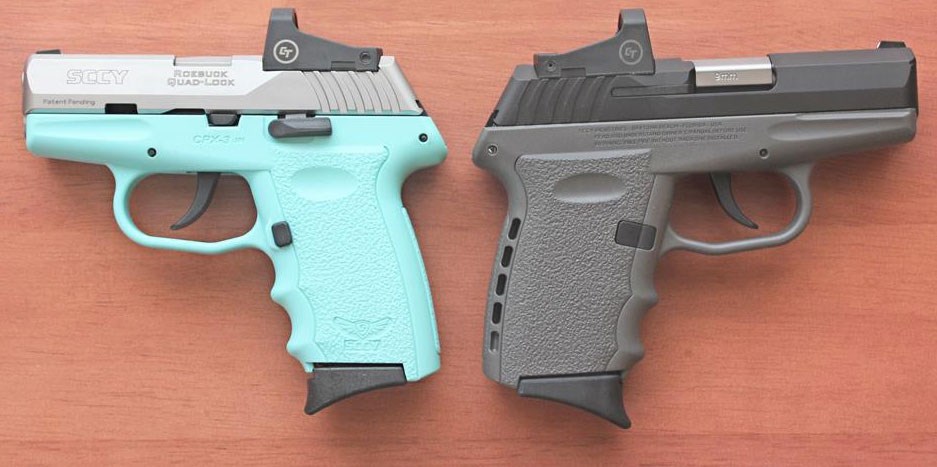 -
-
More optics ready carry pistols are available than ever before, including budget-friendly models like the SCCY pistols shown here.
Always-On vs. Manual Controls
Like other electronic devices, MRDOs are available with various features and price points which will have to be sorted through to figure out which model is the best fit for your needs. But generally speaking, there are two major categories to consider: always-on models versus those with external controls.
Red dots with external controls offer greater flexibility. They can be turned on and off manually and usually offer variable brightness levels. Often, but not always, these models have doors or removable trays that allow spent batteries to be replaced without having to remove the optic from the slide to do so. The tradeoffs include more hands-on management of the optic and shorter battery life because brighter settings use more energy. (This Vortex Venom optic has manual control for adjustable brightness settings.)
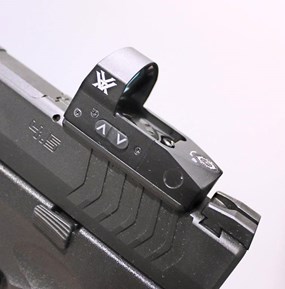
Always-on red dots have simple, one piece housings with no external controls or battery access. Once the battery is in place under the optic, and the optic mounted to the pistol's slide, the red dot's LED will stay on 24/7 until the battery runs down. Some models have sensors that automatically adjust the dot's brightness depending on ambient light levels and sight covers that conserve the batteries when the pistol is in storage.
-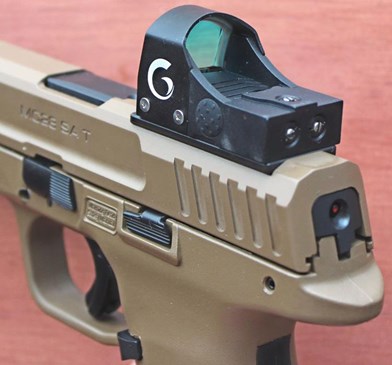
The factory installed always-on Crimson Trace optic shipped with the SCCY CPX-3RD has a square notch that takes the place of the rear sight.
The always-on is a simple solution, which is a good thing since it’s ready to use 24/7. This option sounded like a waste of money to me at first because I grew up with chunky, expensive batteries that burned out quickly. However, always-on optics can have a battery life of three to five years when stored with the cover in place. That means the optic itself is likely to be ready for an upgrade or replacement by the time the 3rd for 4th battery change comes around.
The down side with these models is that they do have to be removed from the slide to trade out the batteries which means they will probably need to be sighted in again at the shooting range.
Do Red Dots Need Iron Supplements?
I'm going to stick with the experts who say that defensive pistols should have a set of iron sights to back up any electronic optic or laser sighting system one may choose to use. That way, if the electronics are damaged or lose power you still have a sight system to work with in a pinch.
I've tried out two iron sight solutions in action that work nicely for concealed carry. One is the use of extra tall sights which are visible through the optic. Sighting in the iron sights and the red dot optic to the same point of aim is called “co-witnessing” the sights. This allows for the most intuitive transition from the red dot to the irons should the optic wink out.
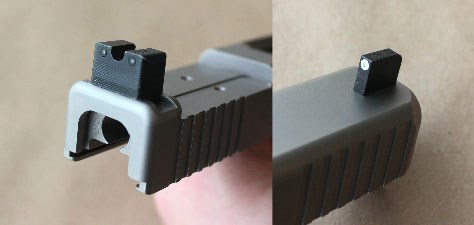
This custom Rival 19 G3 Slide is fitted with extra tall night sights that can be co-witnessed with the optic.
But with some pistols, installing taller sights is not an option. This is because the rear sight has been removed to make room for the optic. In this case, some optics have housings designed to support an accessory rear sight, which is sold separately, or they may have rear sight replacement built in. The Crimson Trace optics sold with the SCCY pistol shown here have a square rear sight notch molded into the rear of the housing.
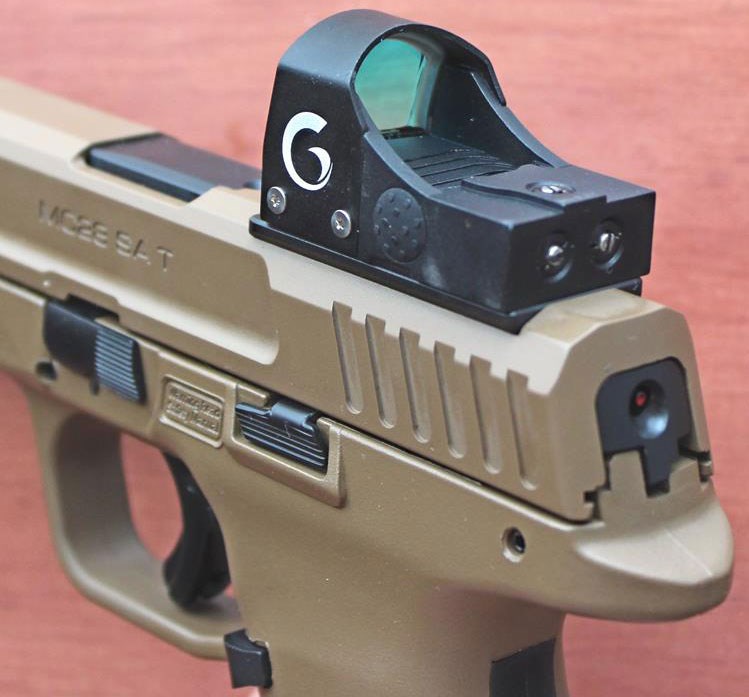
The manually controlled Girsan MC28’s factory installed FAR-DOT optic completely replaces the rear sight.
So what should a self defender do if their optic winks out in the moment they need it most? If the pistol has co-witnessed iron sights then transitioning to those sights is your best option. But what if your pistol doesn't have a rear sight and you're facing an immediate threat? If there is no red dot in the center of the lens to form the sight picture, then self defense trainers recommend using the metal housing around the lens to “frame the picture.” The unlit optic can be used much like a ghost ring sight to form an outline around the central mass of the threat. It's not an optimal or long-range solution, but it can get the job done at close range.
Is a Red Dot Right For You?
Today's micro red dot optics are compact, durable and reliable. With proper installation and care a quality optic should provide years of dependable service. They improve accurate shot placement, especially at longer distances, because they are more intuitive to use than iron sights and easy to see in most lighting conditions. They lend themselves nicely to shooting with both eyes open which is important in a defensive situation in order to be aware of what’s happening around you. They can also be a boon to those whose eyesight may be less than optimal.
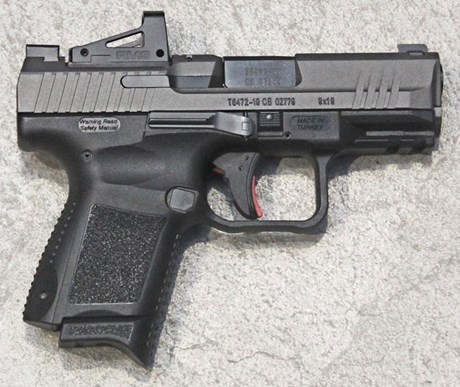
The slide of this Canik TP9 Elite SC is specifically cut for the Shield RMS while other pistols can be fitted with a variety of optic makes and models.
However, adding an MRDO to your carry pistol comes at a cost, literally. Optics ready pistols are usually more expensive while the optics themselves cost between $200 to $600, depending on the model you choose. Like any other sight system, it important to invest in proper training. More Some optics friendly holster systems are available but holster makers are still catching up to the current demand. Some eye conditions, such as astigmatism, can cause the projected dot to have a blurred or starburst appearance to the shooter. And you'll need to modify your daily carry routine to include checking the MRDO to make sure it's clean, tight and operating properly.
If you plan to add a red dot optic to your self-defense plan, then do your homework, buy quality gear and make sure to get the training needed to use it to your greatest advantage.
